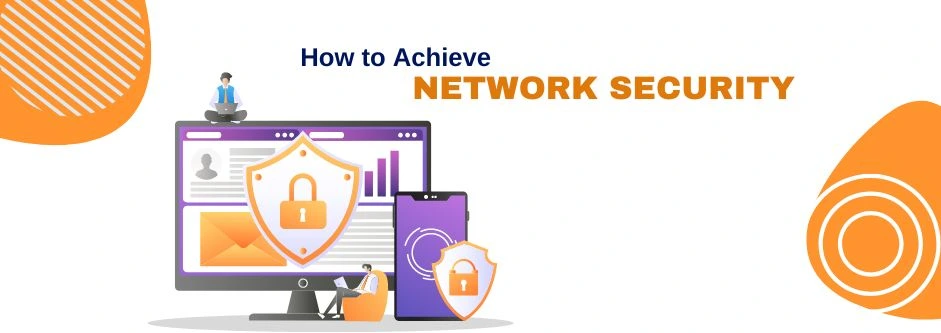How to Achieve Network Security: 4 Essential Steps for IT Professionals
Secure networking protects the network from assaults from inside and outside the company, ensuring that it is available to accomplish its assigned mission. Being the Best IT Security Solutions Provider in Canada, Liqquet IT Solutions.
Traditionally, this has been equated to specific criteria like user authentication, user device protection, and endpoint security solutions in Toronto.
However, because every connected user might potentially attack the network, the trend to convergence, combined with growing workforce mobility, exposes networks to new risks. Over time Liquet IT Solution has become the Best IT Solutions Company in Canada. It provides Top Cloud Infrastructure Services in Ontario, Canada.
Application traffic must be provided securely across the network to avoid dangers such as intellectual property theft or the theft of private data. The Best Cloud Security Service Provider, Liquet IT Solution, provides cloud-based endpoint security and complete web application firewall protection.
Furthermore, the underlying infrastructure must be safeguarded against service disruption (when the network is unavailable for its intended purpose) and service theft ( unauthorized users access network bandwidth or authorized users access unauthorized services). Liquet IT Solution provides Digital Marketing Packages For Small businesses.
While most businesses secure application traffic, few devote enough attention to infrastructure beyond point solutions like firewalls.
Security must be included in all layers and throughout the networking life cycles to security services the entire network. So here is a list of the tips to help achieve network security, which is arguably one of the first areas where a security breach can occur.
1. Employ robust authentication methods
With stolen credentials being the cause of four out of every five security breaches, it’s clear that traditional user names and passwords are insecure and ineffective against today’s sophisticated hackers.
Strong authentication is also known as two-factor authentication because you must use two different things to prove your identity. It combines something you own (the authenticator (token, smart card, or mobile app) with something you know (your login ID and password). Liquet IT Solution provides cloud web application firewall solutions and next-gen firewall services.
2. Install the most recent security patch on your software
Software security patches are essential, regardless of how big or small the fix is. A machine that has not been up to date with the most current safety patch is more likely to have software program vulnerabilities that the most recent virus or malware may exploit. Configure automatic updates and train your employees to accept updates when prompted.
Physically safeguard ports and equipment.
Thieves are interested in more than just the hardware cost of a corporate laptop. A single stolen device might expose critical company data, client details, and other personal information. Criminals can easily steal data or infect your computers and network without having to go online if your computer equipment is not adequately safeguarded.
3. Create cyber security regulations for your staff and inform them of their critical role in security
No matter its size or number of employees, every business requires safety coverage. Ensure that staff are aware of the policy and are adequately taught to carry it out — for example, if a BIOS password is needed, ensure that your employees are trained on setting one up. In addition, you may help employees improve their behavior and conform to company standards by educating them on good security practices.
Encrypt your data and make bios passwords mandatory for users.
Enabling a password on boot is a simple method to add an extra degree of security and web application firewall services. For example, if a user’s laptop is stolen, the criminal can still access the hard drive by booting from another disc. However, the hard drive is inaccessible if the BIOS password is activated.
The enterprise edition of Windows, which incorporates the Bitlocker drive encryption mechanism, is the operating system of choice for most major organizations. This software encrypts any data saved to the hard disc or USB thumb drives once it’s been set up.
Keep your gadgets safe from viruses, malware, and other dangerous software.
All workplace computers and devices should install antivirus and anti-malware software. In addition, use monitoring software to make sure your virus protection is active and hasn’t been turned off by the user, and those non-compliant systems to data security services that cannot connect to your network.
4. Ensure that external network access is protected and secure
To generate secure Internet connections to and from your private networks, ensure that your network employs secured virtual private network (VPN) technology. Strong authentication, including one-time password tokens or certificates-based smart playing cards, must be required for VPN connections. In addition, check to see if your firewalls are set up appropriately. According to Gartner Research, 95 percent of firewall breaches are caused by misconfiguration rather than a weakness in the firewall itself. Therefore it’s critical to monitor your firewall logs regularly and make adjustments as needed.
Conduct frequent internal security audits and make enhancements as needed. Due to the fact generation evolves at such a quick tempo, next-gen firewall protection policies should be reviewed substantially more often than other commercial enterprise processes.
Establish strict security policies for administrator accounts
A single authentication factor is scarcely secure because of the sheer volume of logins required to manage a typical company infrastructure. Still, it’s even worse when privileged admin accounts are shared. Therefore, admin accounts should use strong authentication and not share login credentials.
Don’t forget about mobile devices and bring your device (BYOD).
The need for employees to connect to your corporate network using their own devices is growing in tandem with the growth of mobile usage. While user demand will continue to fuel the BYOD (bring your device) trend, it brings both benefits and concerns. Examine your company’s problems and use cases carefully, then implement regulations to combat this developing trend.




